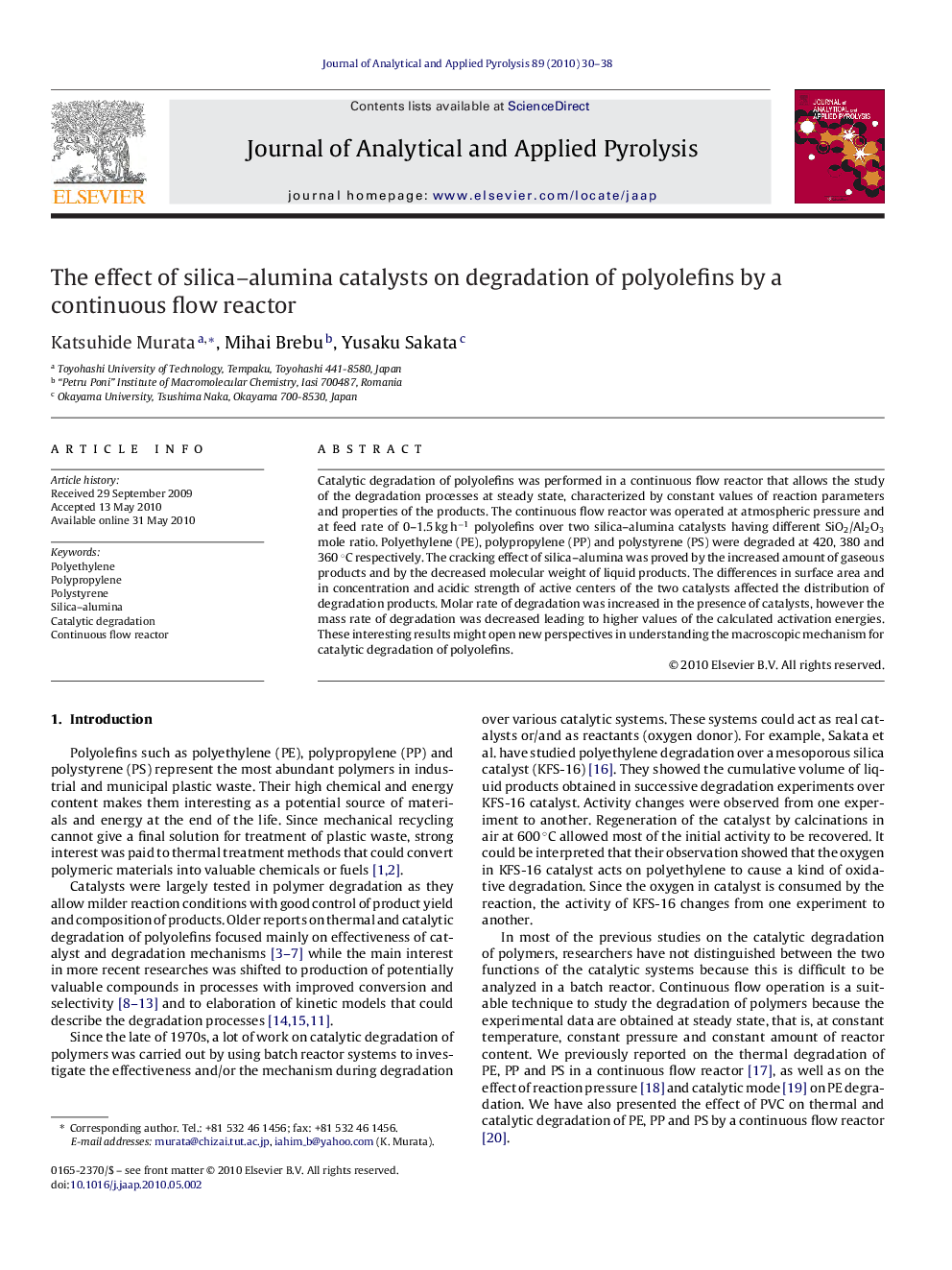| Article ID | Journal | Published Year | Pages | File Type |
|---|---|---|---|---|
| 1197051 | Journal of Analytical and Applied Pyrolysis | 2010 | 9 Pages |
Catalytic degradation of polyolefins was performed in a continuous flow reactor that allows the study of the degradation processes at steady state, characterized by constant values of reaction parameters and properties of the products. The continuous flow reactor was operated at atmospheric pressure and at feed rate of 0–1.5 kg h−1 polyolefins over two silica–alumina catalysts having different SiO2/Al2O3 mole ratio. Polyethylene (PE), polypropylene (PP) and polystyrene (PS) were degraded at 420, 380 and 360 °C respectively. The cracking effect of silica–alumina was proved by the increased amount of gaseous products and by the decreased molecular weight of liquid products. The differences in surface area and in concentration and acidic strength of active centers of the two catalysts affected the distribution of degradation products. Molar rate of degradation was increased in the presence of catalysts, however the mass rate of degradation was decreased leading to higher values of the calculated activation energies. These interesting results might open new perspectives in understanding the macroscopic mechanism for catalytic degradation of polyolefins.
